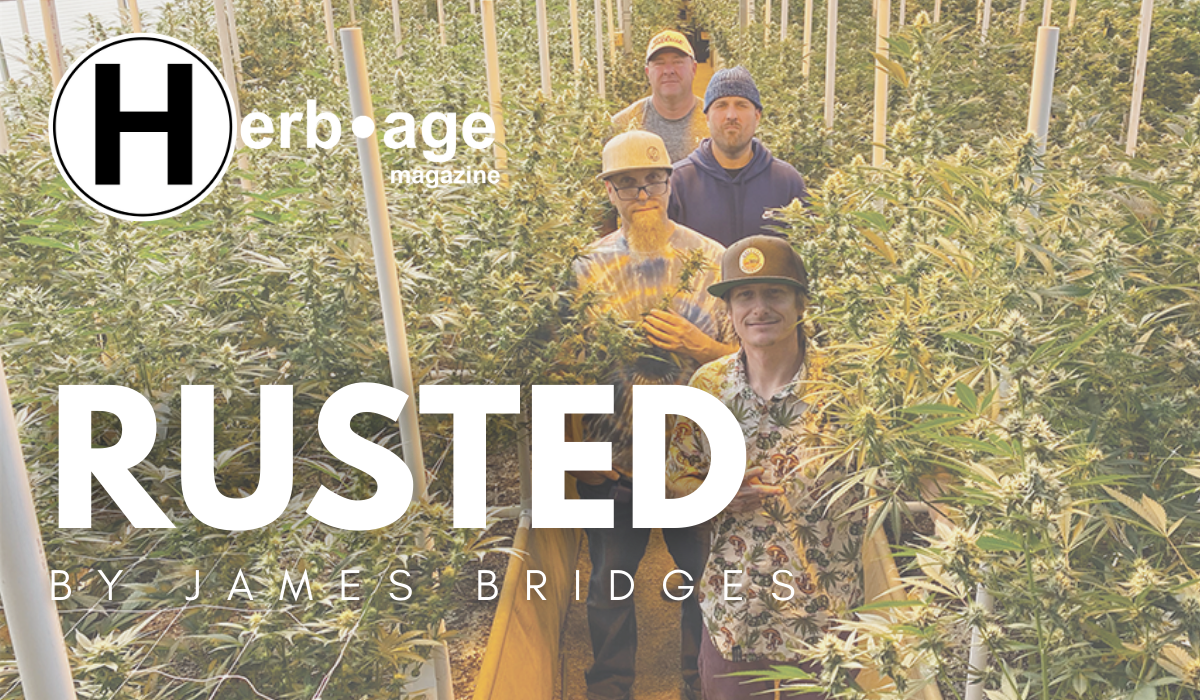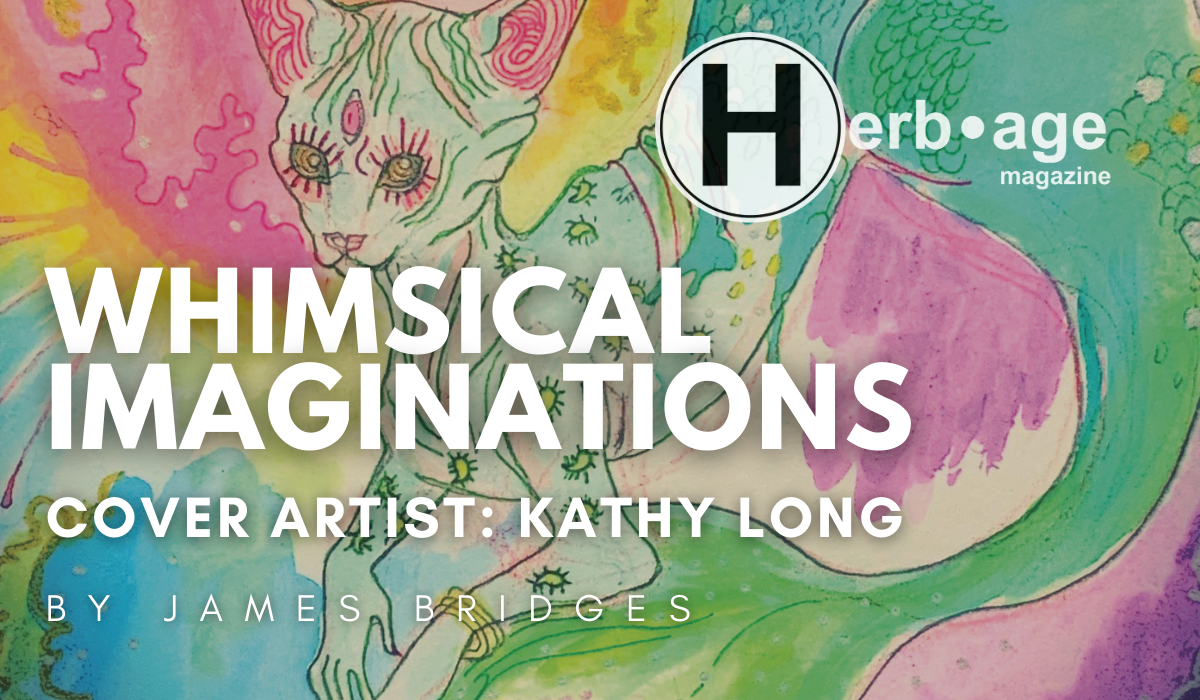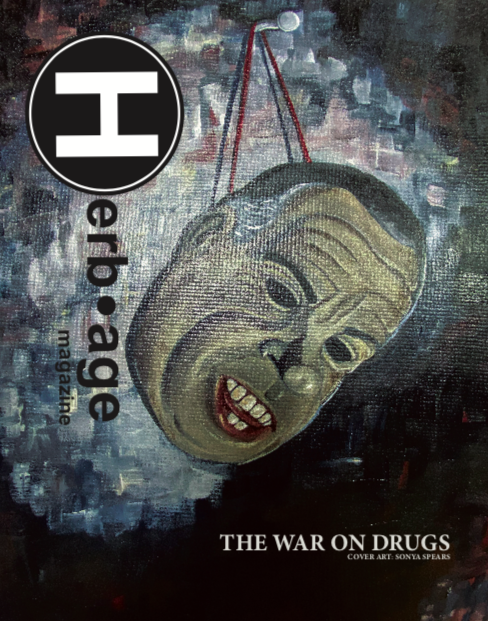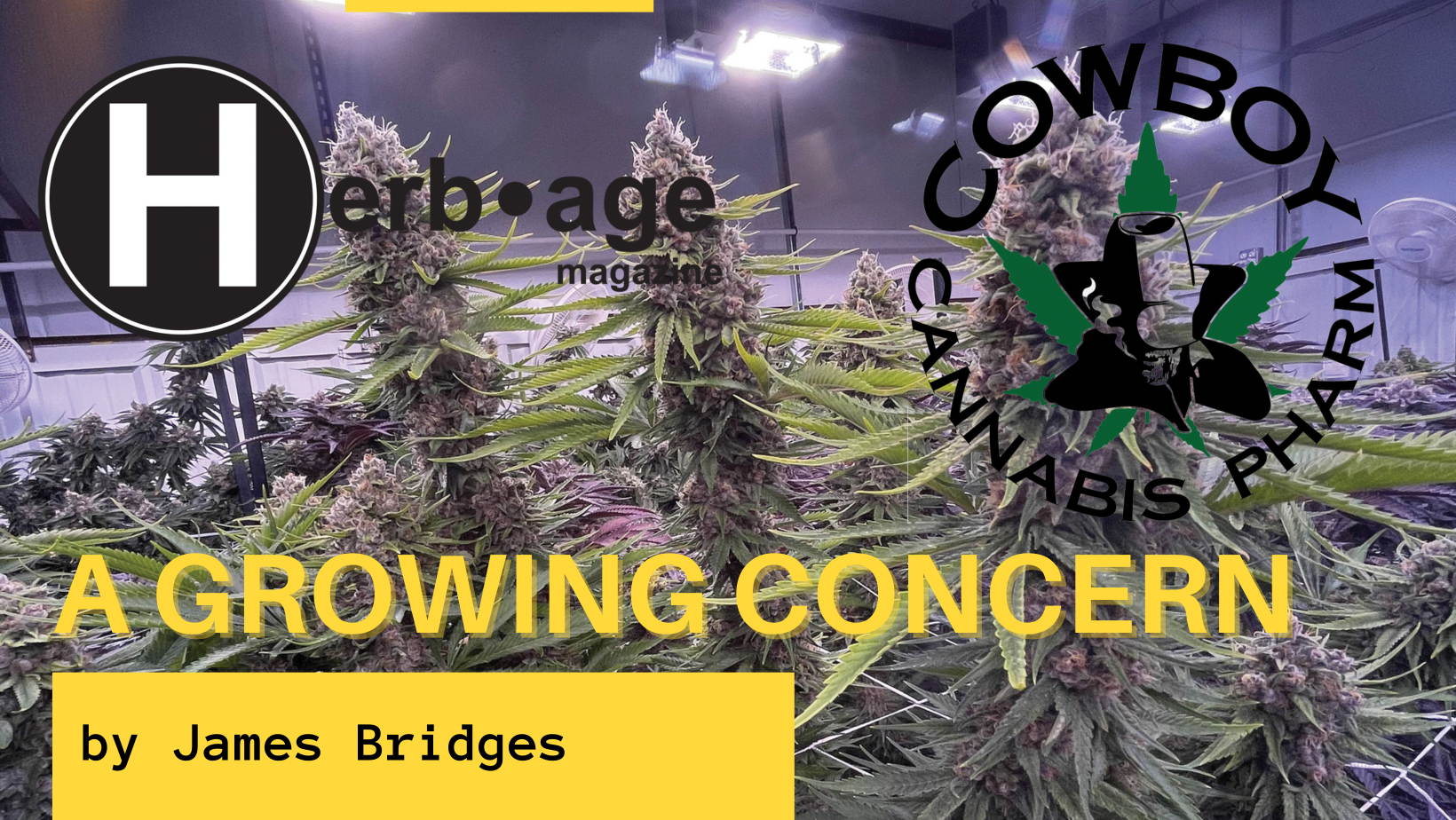By James Bridges | Herbage Magazine
Finally after hearing and reading and talking back-and-forth I am able to sit down with this once cannabis prisoner, the “Genetics Man” himself, Brandon Rust.
 “When I go in there I put in the contract that any genetic material is my property. “That’s one of the reasons why some of those I help don’t sell cuts. It’s because those are my genetics. I don’t want market competition…. Brandon Rust”
“When I go in there I put in the contract that any genetic material is my property. “That’s one of the reasons why some of those I help don’t sell cuts. It’s because those are my genetics. I don’t want market competition…. Brandon Rust”
This is the kind of logically creative (it’s a term now) individual that I’ve been looking forward to talking with and getting his insights on the plant to paper.
“I don’t grow you know cookies and gelatos and you know all the stuff that’s just hype. I would much rather smoke some of the stuff that we’re going to be hunting.”
Bam! In my face was some Sour CheeseBerry day 28. My fingers instantly went for the leaf to squeeze and smudge a smell.
Brandon was in his element, “ This is a very interesting strain right here. You hardly see Delta 3 carene (promotes healthy bones) and ocimene (anti-congestant/anti-inflammatory) as the top terpenes very often.”
What was very interesting was that most of the varieties that are in the room are from 20 years ago. A friend of Brandon and the gang bred these between 2001 and 2003.
Brandon was laser focused, “We have some pretty super old and really good strains that work. Old blueberry, super silver haze, old stuff from San Diego, the bull rider, p91… and you can see the transition from the clones to all of these super silver haze crosses. They’re super long and sick. It’s all filling in and you can see from right there.”
Brandon seemed to have been a little Rusted himself. Smacked in the face with this knowledge of what fantastic cannabis really could and should be, he pointed at his crop as we stood and looked. He talked about them all as if he were the paterfamilias. Yet he treated them as if he were their humble servant.
“I want to find the ones that are best suited for our environment.” Brandon pulled down a stem. “Look how much leaf there is. So it’s not necessarily desirable based on flower production. Since we’re going to be working with different processors this might be one of those things that is excellent for washing right? This is what we do. We hunt strains. We grow the best. We have strains that are rare. If we grow some of those and they are of the same quality, but for whatever reason aren’t as “pretty” then we send them to wash.”
It made perfect sense to me. Why would you throw out something that smelled exactly like the bottom of a garbage truck? The only reason I can find is if that smell were not intentional. However, this purposely grown stank smelled like the garbage truck was buried under another garbage truck for a few years. Must have been some potent stuff…
Brandon also does some outside consulting in the grow space.
“My Consulting is pretty selective because I don’t have the time to allocate. I know a whole lot of hands-on stuff but remote consulting is a lot easier. I can do soil auditing. I can look at soil in saturated pace testing. I can help dial in the numbers to get to targets. One of the biggest assets I offer is knowledge in ways to cut costs.”
Brandon continued, “I’m able to reduce the input costs because typically in cannabis you’re using fertigation salts and it’s very very expensive. It’s a continuous occupancy and expenditure that increases the production value. That increases the cost to grow that cannabis.”
 “When you’re doing something organically with modified mixes and living soils you can reuse the soil continuously cycle over cycle so you’re not wasting any. You’re not throwing it out. Also to get your soil’s back to the target levels you can take what’s called a soil and saturated paste testing. These mixes work more like hydroponic media than they do actual soil because there’s no sand, silt, or clay. There’s no naturally weathered elements to this soil. So what we’re looking at is what elements fall into the solution. Water until you’re able to take the saturated paste test and it gives you those values and you can dial in those values based off of your mineral inputs.”
“When you’re doing something organically with modified mixes and living soils you can reuse the soil continuously cycle over cycle so you’re not wasting any. You’re not throwing it out. Also to get your soil’s back to the target levels you can take what’s called a soil and saturated paste testing. These mixes work more like hydroponic media than they do actual soil because there’s no sand, silt, or clay. There’s no naturally weathered elements to this soil. So what we’re looking at is what elements fall into the solution. Water until you’re able to take the saturated paste test and it gives you those values and you can dial in those values based off of your mineral inputs.”
“Let’s say if you were deficient in calcium but everything else was in balance. You could add something like Gypsum to give more calcium into your soil. The calcium level will increase with a little help. “
“A lot of different functions of overall mineral inputs are very cost-effective and are typically used for conventional agriculture. That’s one of the reasons why they’re so expensive. Because these things are produced for applying pounds per acre. You can use the same very inexpensive CDFA certified organic mineral inputs to increase and balance your soil and keep it in balance. Furthermore, if you do that, you’re going to be able to maintain your health and your quality. Your production will be consistent as long as you’re collecting data and you’re using science then you’ll always be able to maximize your quality and yield.”
Brandon is not alone in this venture. “My partner he’s been growing indoors since 92 he showed me how to do this. I had the opportunity to get him out here to work on this project and we work really well together. We maintain this place just as if it were a boutique style. Even though we scaled this we still do all the maintenance work. We still do all that integrated pest management protocols. We still go in and prune. You know… we do all the same things that we would do for a boutique style or indoor cultivation and the reason why is because we still want to be able to produce high-quality products to the market and what I think that would be a cheaper price point.”
Something we can all get behind is what Rust Brandon and the crew believe in wholeheartedly; “a little trickle down to the patient, they will be able to consume a high-quality product that is safe.”
“I do not want to do anything to my plants that isn’t natural. That’s why you see all these sachets hanging. These beneficial mites will protect these plants from any type of pest and these plants are protected. Even though you can’t see. These plants have been biologically protected. I can safely say that we did this the right way, our way, and it’s the healthy way…Brandon Rust.”




